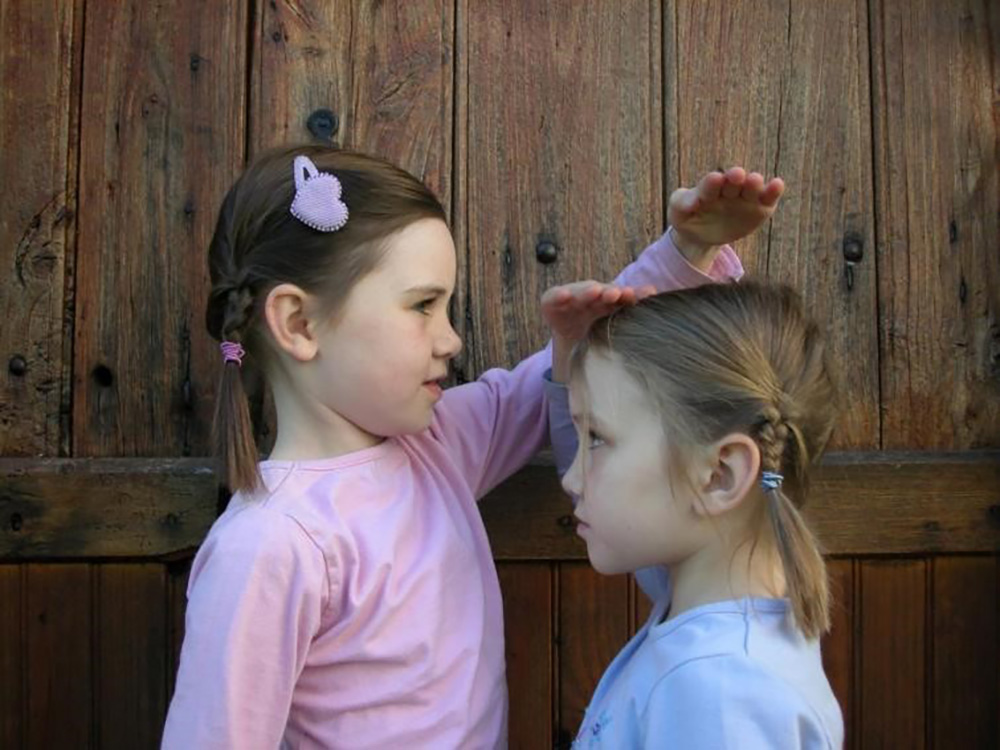
按照兄弟姐妹的出生顺序,谁会是赢家?到底是面临压力但成功的年长子女,还是自由奔放但被忽视的年幼子女,多年来人们对此一直争论不休,甚至让心理学创始人西格蒙德·弗洛伊德(长子)和作为中间孩子的同事阿尔弗雷德·阿德勒之间产生了分歧。但在职场成功方面,数据毋庸置疑:年长的子女更有优势。
大量研究显示,一般而言,年长子女的智商略高于年幼的兄弟姐妹,学习成绩更好,并且在成年后通常收入更高。CareerBuilder的一项调查发现,年长子女更有可能获得六位数薪酬,而经常被忽视的中间子女则最有可能从事薪资不超过35,000美元的初级岗位。
在美国国家经济研究局(NBER)的一份工作文件中,一项最新研究分析了年长子女和其他兄弟姐妹之间持续存在较小薪酬差距的原因。这并不是因为父母更爱其中某一个孩子,而是与孩子生病的频率以及兄弟姐们对此的影响程度有关。
健康经济学家们通过研究丹麦1981年至2017年出生的所有头胎和二胎孩子,找出了一个对兄弟姐妹中年龄更小的孩子影响更大的因素:疾病。
当然,任何父母都知道孩子们经常生病。但是,健康经济学家N·梅尔泰姆·戴萨尔、丁辉(音译)、玛雅·罗辛-斯莱特和汉尼斯·施万特的报告发现,一个人在兄弟姐妹中的排行,对其对细菌的敏感性有很大影响。在出生后至关重要的前几个月,二胎子女往往比头胎更有可能住院。
斯坦福大学健康政策与经济系副教授罗辛-斯莱特对《财富》杂志表示:“在出生后的第一年,二胎子女因为呼吸道疾病住院的概率比头胎高2至3倍。”她表示,这在二胎出生后的前三个月尤其明显,而“在一岁之后,这种差异基本会消失。”
西北大学人类发展与社会政策副教授、报告的另外一位作者施万特对《财富》杂志称,“出现这种情况很合理,但头胎和二胎之间的差异之大令人震惊。”
丹麦慷慨的社会保障制度使研究人员可以找出兄弟姐妹之间的差异。在丹麦,父母通常有一年带薪休假时间,之后孩子们开始上公立学前班。因此,头胎出生后的第一年是在家和父母一起度过,与外界接触有限,而二胎出生后的第一年则是生活在有哥哥姐姐四处走动的环境中。
研究人员还发现,秋冬季节出生的孩子和年龄更接近的兄弟姐妹更有可能生病。
幼年生病的风险更高,意味着未来的收入更少。罗辛-斯莱特对《财富》杂志表示,更容易生病的二胎“在25到32岁时的收入更低。他们并不是[更不]可能工作,他们只是在所从事的工作中收入更低。”
施万特表示,对于美国的孩子和他们的父母来说,这种影响甚至更加明显。相比丹麦人,美国人缺乏基本的医疗保健,而且美国没有全国育儿假——最幸运的职场父母最多只能有几个月假期。施万特表示:“由于育儿假很短,因此人们很早甚至在孩子一两个月大的时候,就把孩子送去日托。对于这些孩子来说,疾病的影响只会更大。”
对于恐慌的家长们来说,好消息是差异很小。最容易生病和最健康的孩子的收入只相差不到1%。(按照目前具有代表性的薪酬水平,相当于年长子女的年薪为59,400美元,而弟弟的薪酬是58,271美元。)智商也是一样——虽然平均而言,年长子女的平均分数更高,但差异仅为2或3分。事实上,施万特解释说,虽然统计学家们通过数十年来对数百万儿童的观察,可以梳理出一段时间内的平均模式,但平均数对于预测特定个人在生活中的成功并没有太大意义。罗辛-斯莱特表示,她希望这项研究能够指导公共卫生政策——比如确保年轻父母给孩子接种疫苗并享有育儿假。
他们表示,毕竟,金钱并不是万能的。
罗辛-斯莱特说道:“当我们说年长的孩子更有优势时,我们所说的结果范围较小,仅限于收入和教育。还有其他衡量幸福、快乐和生活满意度的指标,我们根本没有涉及。”(财富中文网)
翻译:刘进龙
审校:汪皓
按照兄弟姐妹的出生顺序,谁会是赢家?到底是面临压力但成功的年长子女,还是自由奔放但被忽视的年幼子女,多年来人们对此一直争论不休,甚至让心理学创始人西格蒙德·弗洛伊德(长子)和作为中间孩子的同事阿尔弗雷德·阿德勒之间产生了分歧。但在职场成功方面,数据毋庸置疑:年长的子女更有优势。
大量研究显示,一般而言,年长子女的智商略高于年幼的兄弟姐妹,学习成绩更好,并且在成年后通常收入更高。CareerBuilder的一项调查发现,年长子女更有可能获得六位数薪酬,而经常被忽视的中间子女则最有可能从事薪资不超过35,000美元的初级岗位。
在美国国家经济研究局(NBER)的一份工作文件中,一项最新研究分析了年长子女和其他兄弟姐妹之间持续存在较小薪酬差距的原因。这并不是因为父母更爱其中某一个孩子,而是与孩子生病的频率以及兄弟姐们对此的影响程度有关。
健康经济学家们通过研究丹麦1981年至2017年出生的所有头胎和二胎孩子,找出了一个对兄弟姐妹中年龄更小的孩子影响更大的因素:疾病。
当然,任何父母都知道孩子们经常生病。但是,健康经济学家N·梅尔泰姆·戴萨尔、丁辉(音译)、玛雅·罗辛-斯莱特和汉尼斯·施万特的报告发现,一个人在兄弟姐妹中的排行,对其对细菌的敏感性有很大影响。在出生后至关重要的前几个月,二胎子女往往比头胎更有可能住院。
斯坦福大学健康政策与经济系副教授罗辛-斯莱特对《财富》杂志表示:“在出生后的第一年,二胎子女因为呼吸道疾病住院的概率比头胎高2至3倍。”她表示,这在二胎出生后的前三个月尤其明显,而“在一岁之后,这种差异基本会消失。”
西北大学人类发展与社会政策副教授、报告的另外一位作者施万特对《财富》杂志称,“出现这种情况很合理,但头胎和二胎之间的差异之大令人震惊。”
丹麦慷慨的社会保障制度使研究人员可以找出兄弟姐妹之间的差异。在丹麦,父母通常有一年带薪休假时间,之后孩子们开始上公立学前班。因此,头胎出生后的第一年是在家和父母一起度过,与外界接触有限,而二胎出生后的第一年则是生活在有哥哥姐姐四处走动的环境中。
研究人员还发现,秋冬季节出生的孩子和年龄更接近的兄弟姐妹更有可能生病。
幼年生病的风险更高,意味着未来的收入更少。罗辛-斯莱特对《财富》杂志表示,更容易生病的二胎“在25到32岁时的收入更低。他们并不是[更不]可能工作,他们只是在所从事的工作中收入更低。”
施万特表示,对于美国的孩子和他们的父母来说,这种影响甚至更加明显。相比丹麦人,美国人缺乏基本的医疗保健,而且美国没有全国育儿假——最幸运的职场父母最多只能有几个月假期。施万特表示:“由于育儿假很短,因此人们很早甚至在孩子一两个月大的时候,就把孩子送去日托。对于这些孩子来说,疾病的影响只会更大。”
对于恐慌的家长们来说,好消息是差异很小。最容易生病和最健康的孩子的收入只相差不到1%。(按照目前具有代表性的薪酬水平,相当于年长子女的年薪为59,400美元,而弟弟的薪酬是58,271美元。)智商也是一样——虽然平均而言,年长子女的平均分数更高,但差异仅为2或3分。事实上,施万特解释说,虽然统计学家们通过数十年来对数百万儿童的观察,可以梳理出一段时间内的平均模式,但平均数对于预测特定个人在生活中的成功并没有太大意义。罗辛-斯莱特表示,她希望这项研究能够指导公共卫生政策——比如确保年轻父母给孩子接种疫苗并享有育儿假。
他们表示,毕竟,金钱并不是万能的。
罗辛-斯莱特说道:“当我们说年长的孩子更有优势时,我们所说的结果范围较小,仅限于收入和教育。还有其他衡量幸福、快乐和生活满意度的指标,我们根本没有涉及。”(财富中文网)
翻译:刘进龙
审校:汪皓
In sibling birth order, who’s the winner? The debate between pressured-but-successful older children or free-spirited but overlooked younger siblings has consumed many over the years, even leading to the rift between psychology founder Sigmund Freud (a firstborn child) and his middle-child colleague Alfred Adler. When it comes to corporate success, though, the data is unquestioned: Older children have it made.
Older kids, on average, have slightly higher IQs than their younger siblings, do better in school, and tend to earn more money as adults, as abundant research has shown. A CareerBuilder survey found that older children were more likely to achieve six-figure salaries, while the oft-overlooked middle children are most likely to be in entry-level jobs earning $35,000 or less.
Now, new research in an NBER working paper has proposed a reason for the small but persistent pay gaps between the first and the rest. It’s not because parents love one child more than the other—rather, it has to do with how frequently kids fall ill, and how much siblings can influence that.
By looking at all first and second children born in Denmark between 1981 and 2017, health economists have isolated one factor that affects youngsters more than their siblings: Sickness.
Of course, any parent can confirm that kids get sick all the time. But where you fall in the line of succession makes a big difference on your susceptibility to germs, finds the paper from health economists N. Meltem Daysal, Hui Ding, Maya Rossin-Slater and Hannes Schwandt. And in the critical first months of life, second siblings are much more likely to end up in the hospital than older peers.
“In the first year of life, second-born children have 2 to 3 times higher likelihoods for being hospitalized for a respiratory condition,” Rossin-Slater, an associate professor in the health policy and economics departments at Stanford University, told Fortune. It’s especially visible in the first three months of a second child’s life, and “the difference basically disappears after age one,” she said.
“It made sense but was shocking to look at how big the differences are” between first and second kids, coauthor Schwandt, associate professor of Human Development and Social Policy at Northwestern University, told Fortune.
Denmark’s generous social safety net allowed the researchers to pinpoint the differences between siblings. In Denmark, parents typically have one year of paid leave, after which time kids start public preschool. So, while the firstborn child spends their first year at home with the parents and has limited contact with the outside world, the second sibling’s first year is marked by an older sister or brother coming and going from an environment with many other kids.
The researchers also found that kids are more prone to sickness if they’re born in the fall and winter months, as well as when the younger and older sibling are closer in age.
That higher risk of sickness early in life translates to less money down the road. Those sicker second kids, “when they’re between ages 25 and 32, they have lower incomes. They’re not [less] likely to work, they just earn less in the jobs that they do have,” Rossin-Slater told Fortune.
For kids and their parents in the U.S., Schwandt said, the effects could be even more pronounced. More Americans than Danes lack basic health care access, and the U.S. has no national parental leave—the most privileged working parents can expect a few months at most. “Because parental leave is so short, people sometimes put their kids into daycare very early, even at two months or one month,” Schwandt said. “The effect for diseases for those kids will be only bigger, if anything.”
The good news for panicked parents, though, is the differences are small. The sickest and healthiest kids are separated by just under 1% of income. (At today’s typical pay levels, that’s like an older sibling earning $59,400 a year while their kid brother brings home $58,271.) Same goes for IQ — while older kids, on average, have higher scores, the difference amounts to just 2 or 3 points. In fact, Schwandt explained, while statisticians looking at millions of kids over several decades can tease out average patterns over time, averages don’t mean much for predicting a particular individual’s success in life. Rossin-Slater said she hopes this research can guide public-health policy—such as ensuring young parents vaccinate their kids and have access to parental leave.
And after all, they say, money isn’t everything.
“It’s a pretty narrow set of outcomes we’re talking about when we say firstborns have an advantage–income and education,” Rossin-Slater said. “There’s a whole other set of measures of wellbeing, happiness and life satisfaction, that we’re not even touching on.”






